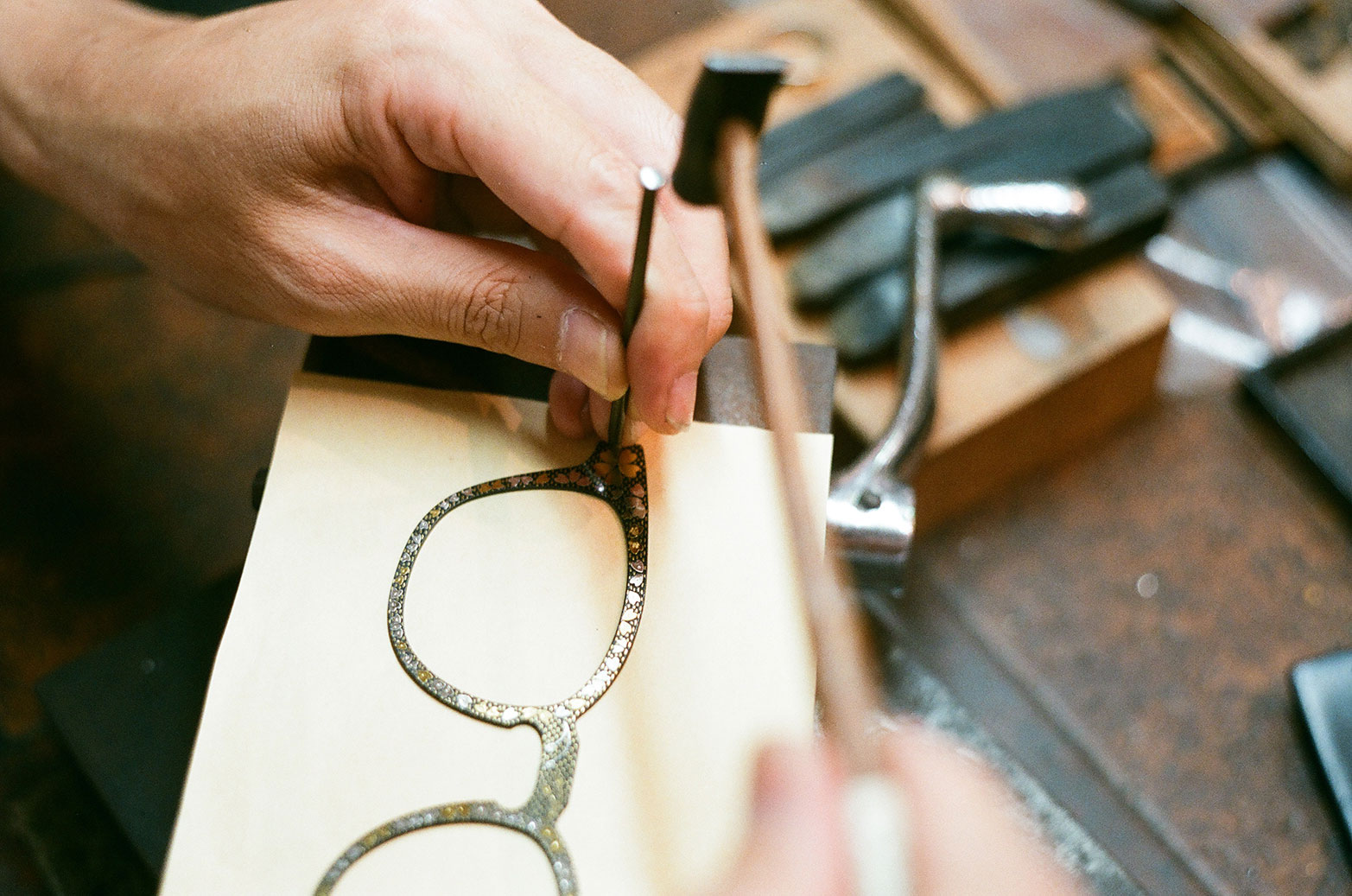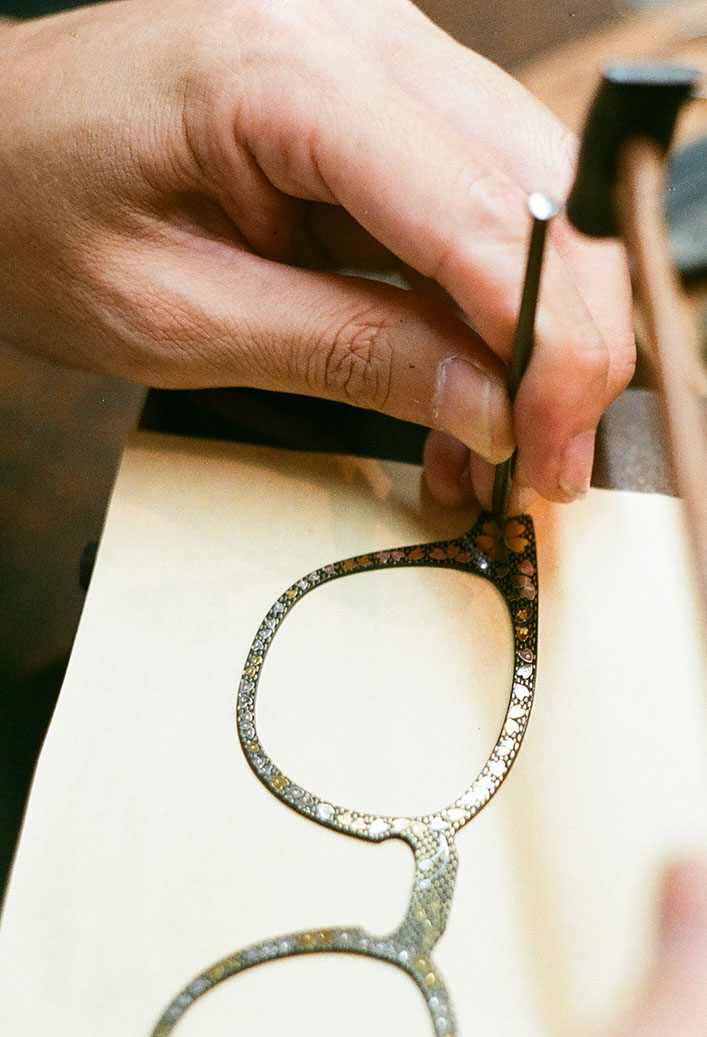

EYEVAN × KYOTO
interview 10
”What we can do with Zogan(damascening) “
Mr. Ryuji Nakajima, the 2nd generation of Nakajima Zogan (est. 1950/ Ukyo-ku, Kyoto)
The technique of Zogan (damascening) has been introduced to Japan across the Silk Road. Since then, it has been transformed with the unique sensibilities of Japanese craftsmen. At the age of 19, Mr. Ryuji Nakajima apprenticed himself to his grandfather. He challenges to create works that are not only inherited from his grandfather but also filled with ideas and persistence that expand the possibilities of Zogan. We interviewed Mr. Ryuji Nakajima, the 2nd generation of Nakajima Zogan, about the production process and other aspects of Zogan that are not well known.
About Zogan
“Forming” and “fitting” gold and silver
Zogan means “to form” and “to fit”, which is a technique of inlaying different materials into one material. Zogan flourished in Japan during the Edo period. It was applied to sword guards of samurai and to religious implements. I think it was also meant to symbolize their status. Kyo Zogan is called “Nunome Zogan,” and the most important part of the process is “Nunome-kiri,” in which fine grooves are carved into the iron fabric horizontally and vertically with a tugger. Engrave 7 to 8 fine grooves in a 1 mm square. It is called “Nunome” Zogan because these fine grooves look like the texture of cloth (Nuno in Japanese). Gold or silver patterns of 1 mm or less in diameter are hammered into these grooves. Since the fabric is engraved, even the smallest pattern can be inserted.


Zogan for Modern life
We also have new Zogan forms that were created based on customer feedback. Gold and silver patterns on a black background are quite plain. One day, a customer pointed this out to me, saying, “Can’t you make something more colorful?” Then, I hollowed out the part that did not contain a pattern with a thread saw and made a watermarked accessory. However, when I made this, my grandfather was not happy as it takes a lot of time and efforts making it. So, I secretly produced the work at night to hide from him. But fortunately, the work ended up in the hands of a customer, and gradually he came to approve of it. I think we will continue to search for the best, because today, if you don’t make something great, people won’t pay attention to them.

Meaning of tradition
I want to preserve it because it’s a great thing
I think that traditional crafts have a history of hundreds of years, and the fact that they have lasted that long, because they are great things. That is why it should not be gone. Most people don’t even know how Zogan is made. For decades, we have been focusing on demonstrations and workshops for children and adults to promote traditional crafts and Zogan. We try to do what we can do first.
Our values
Make what I think is beautiful
What is most important is the beauty of the final product. The way to determine is where I think I’ve done a beautiful job. For example, the small dots that are applied to the background of the pattern. The gold is placed one by one in the form of wire, and it is arranged neatly in the shape of bricks, in alternate directions, and with the same length. Small details can make a big difference in the mood of a work. It is not because someone taught me how to do it, but because I think it is more beautiful when they are lined up like this.
About Succession
Great skill of the predecessor
When I was a child, I was a little uncomfortable been with my predecessor who was taciturn. When I took over the business, what I felt was a great skill of my predecessor. For example, it requires a lot of skill to inlay on a round object such as an incense burner. It is also difficult to cut the fabric grain unless the object is flat. I have a son who is in elementary school, and he comes by here on his way home from school to see my work. I am not sure yet whether my son will take over the business or not, but I would like to do my best now so that he can do it when he wants to.


